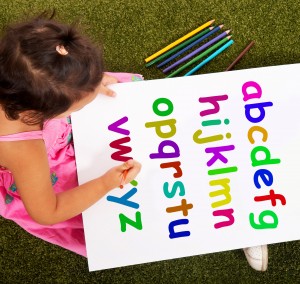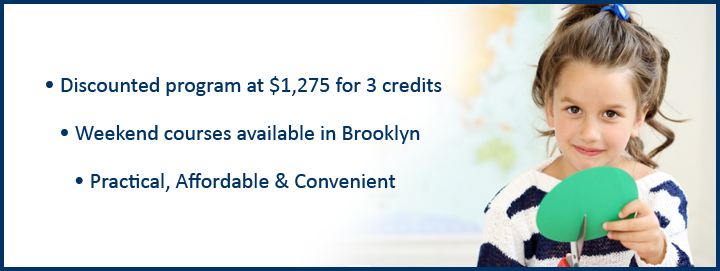Developmentally Appropriate Practice
Developmentally Appropriate Practice for Early Childhood Education
 The National Association for the Education of Young Children Celebrates Week of the Young Child, April 6-12, 2014
The National Association for the Education of Young Children Celebrates Week of the Young Child, April 6-12, 2014
The phrase “high quality early education” has been trending in the media in recent months and has become a rallying cry in many political circles. But how do we define “high quality early education” exactly? The National Association for the Education of Young Children (NAEYC) describes itself as “the nation’s leading voice for high quality early childhood education for children from birth through age 8” and rightfully so. It is the world’s largest organization working on behalf of young children whose fundamental tenet resides in developmentally appropriate practice or DAP.
What is Developmentally Appropriate Practice?
NAEYC describes DAP as “an approach to teaching grounded in the research on how young children develop and learn and in what is known about effective early education.” DAP is rooted in three core considerations, the first of which is knowledge of child development and learning. NAEYC stresses the importance of understanding the research on typical milestones for various ages and stages. This knowledge is critical in informing the experiences that should be offered to young children in order to continually advance their learning and development.
NAEYC’s second core consideration with respect to DAP is knowing what is individually appropriate. In a developmentally appropriate classroom environment, teachers must engage in ongoing observations of children, their play, and their interactions with materials and others. In this way, the teachers are able to recognize each child’s unique interests, abilities and developmental progress.
The third core consideration of DAP is knowing what is culturally important. Along with getting to know each individual child, NAEYC maintains that we must come to know and appreciate the families’ values, expectations and the conditions that impact their homes and communities. Only in this way can early childhood educators provide meaningful, relevant and respectful learning experiences for each and every child.
 This week especially, NAEYC will highlight the importance of high quality early childhood education as the organization celebrates its annual Week of the Young Child. This year’s theme is The Early Years are the Learning Years! During the week of April 6th, 2014, the organization will focus public attention on meeting the needs of young children and their families knowing that this is truly the foundation for children’s success in school and later in life.
This week especially, NAEYC will highlight the importance of high quality early childhood education as the organization celebrates its annual Week of the Young Child. This year’s theme is The Early Years are the Learning Years! During the week of April 6th, 2014, the organization will focus public attention on meeting the needs of young children and their families knowing that this is truly the foundation for children’s success in school and later in life.
NAEYC recommends the following ten ways to learn more about high quality early childhood education:
- Become a NAEYC member. Although a national association, NAEYC also has an extensive network of state and local affiliate groups. Members receive the latest research on early childhood education through books and magazine articles. Additionally, NAEYC conferences are a rich source for professional development options. They are attended by teachers, administrators, mentors, therapists, policy makers, and parents.
- Read an early childhood education bestseller. NAEYC’s online store and catalog of resources offer a wide variety of information on best practices for teaching and learning.
- Explore developmentally appropriate practice. DAP focuses on the needs of the whole child, including physical, cognitive, language and social/emotional development. It is the optimal framework to promote children’s continuous learning and development.
- Learn about NAEYC Position Statements. These statements clarify the Association’s position on controversial and critical early childhood education matters. Some of the issues addressed include diversity, ethics, program and professional preparation standards, inclusion, child abuse prevention, curriculum, assessment and program evaluation.
- Attend the Annual Conference and Expo or the Institute. The theme for the 2014 National Institute for Early Childhood Professional Development is Excellence for Every Child: Standards Without Standardization.
- Find a NAEYC accredited program. Accredited early childhood education programs have demonstrated competency across a broad range of criteria. The criteria measured is related to ten standards of quality which include Relationships, Curriculum, Teaching, Assessment of Child Progress, Health, Teachers, Families, Community Relationships, Physical Environment and Leadership/Management.
- Pursue accreditation for your program. NAEYC offers accreditation of programs for young children, accreditation of associates degree programs and recognition of baccalaureate and graduate degree programs. By setting professional standards, NAEYC helps to sustain high quality programs for children and early childhood educators.
- Catch up on Young Children or Teaching Young Children, NAEYC’s award winning professional journals. Digital versions of the journals contain a vast archive of past articles and columns. Comprehensive training outlines for certain articles are available for professional development opportunities.
- Donate to NAEYC. Contributions are tax-deductible as well as a solid investment in the establishment of excellence in early childhood education. Donations help to fund important initiatives including teacher training and research and public policy efforts.
- Sign Up for Policy Updates. Join NAEYC in advocating for young children. Team up with the Association as it pursues its goal for a fiscally sound, high quality system of early childhood education for all children from birth to age eight.
Geraldine Dasaro is the Director of Education of Our Saviour’s Lutheran Preschool, a NAEYC accredited program in Bay Ridge, Brooklyn. She began her career eleven years ago and has served as both a Universal Pre-K Teacher and Staff Developer.
Teach Pre K with our Early Childhood Masters!



